7 Fat-Burning Vegetables to Include in Your Diet Now
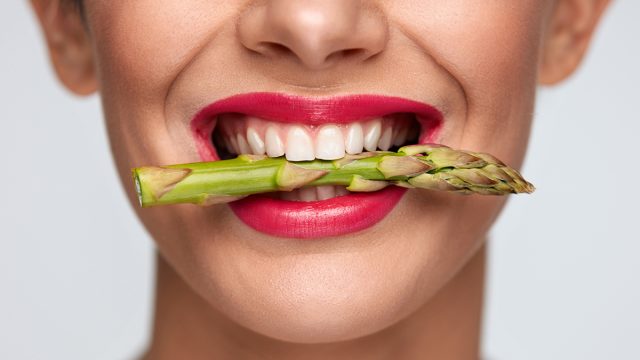
Vegetables are practically a magical tool when it comes to weight loss—you can enjoy a huge amount without going over your calorie limit. When the immense health and nutritional benefits of a plant-heavy diet are taken into account, it's clear vegetables can make the whole process so much easier. Here are seven vegetables you should absolutely keep on hand to enhance weight loss and create sustainable dietary habits.
Mushrooms
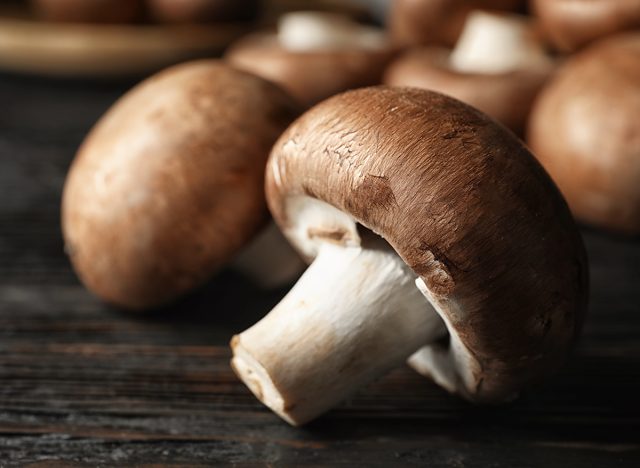
Mushrooms are low in calories but pack a serious punch when it comes to satiety and nutrition. "One distinctive characteristic of mushrooms is they provide umami to dishes," Kjersten Nett, RDN, LD tells Mayo Clinic Health System. "Umami is often considered the fifth basic taste, along with sweet, sour, salty, and bitter. This brothy, savory taste makes it a good meat alternative. Try replacing one-quarter to one-half of the meat in a recipe with chopped mushrooms."
Sweet Potato
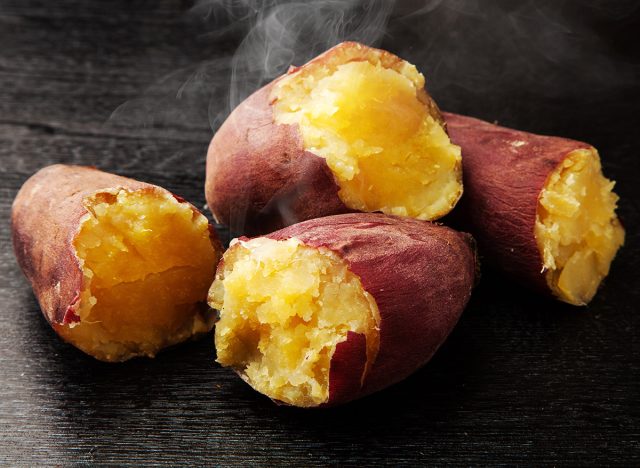
Sweet potato is a great choice for weight loss thanks to being high in fiber. "In addition to being budget-friendly, there are many health benefits to potatoes," says UC Davis Health. "They're rich in energy, fiber, vitamins, and minerals. Try to include different varieties of potatoes in your diet to maximize the nutritional benefits."
RELATED: 15 Quick Ways to Lose Body Fat Percentage in a Week
Spinach
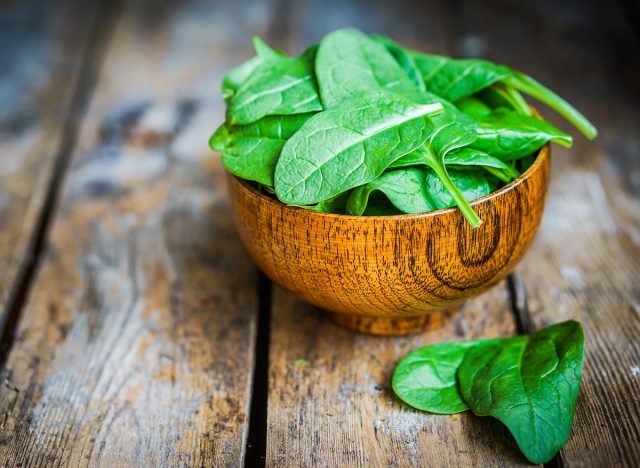
Spinach is low in calories and high in nutrition, experts say. "Spinach is one of the most nutritious foods you can eat," registered dietitian Kayla Kopp, RD, LD, tells the Cleveland Clinic. "It's also very easy to use. Raw or cooked, spinach is great in salads, appetizers, smoothies and main dishes."
Cabbage
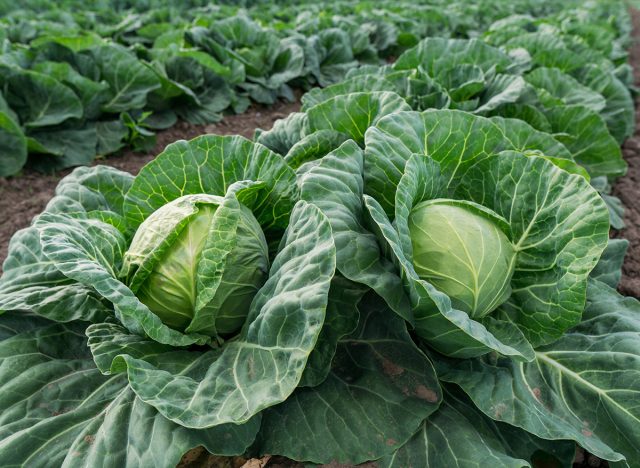
Cabbage is a superfood that is incredibly nutritious, filling, and diet-friendly. This counts for regular cabbage as well as fermented cabbage such as kimchi and sauerkraut. "Cabbage can help you stay regular," Julia Zumpano, RD, LD, tells the Cleveland Clinic. "It can also help support safe and healthy weight loss."
Broccoli
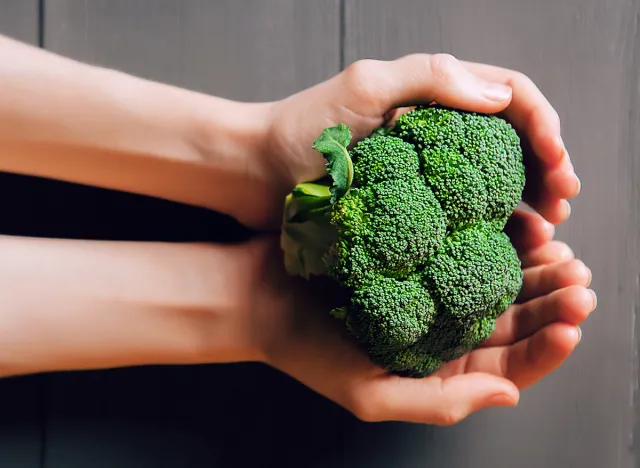
Broccoli is full of nutrients and fiber that help you feel full. "A pile of steamed broccoli doesn't appeal to everyone," registered dietitian Beth Czerwony, RD, LD, tells the Cleveland Clinic. "But broccoli is incredibly versatile and can be used in so many different dishes. Toss it in with your stir fry, chop it fresh in a salad or roast it with your baby potatoes. And with an abundance of nutrients, there are many benefits of eating broccoli."
Spaghetti Squash
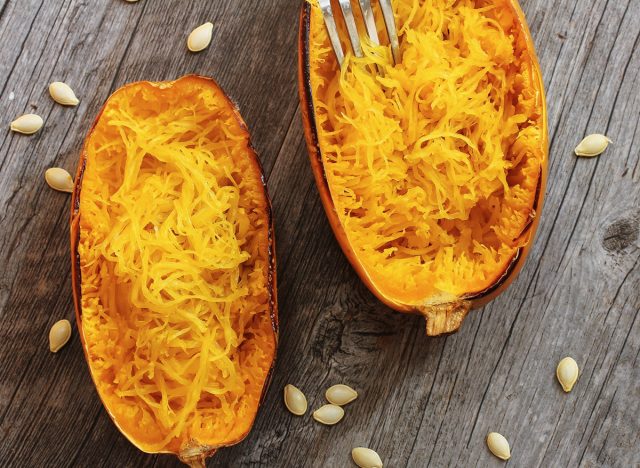
Spaghetti squash can be turned into "noodles" that are a great replacement for regular pasta. "A cup is a pretty good serving and that's only about 40 calories," Czerwony tells the Cleveland Clinic. "It's really a great way to cut calories from your meal without sacrificing that mouthfeel you're looking for."
RELATED: I Lost 100 Pounds by Cutting Out Sugar
Asparagus
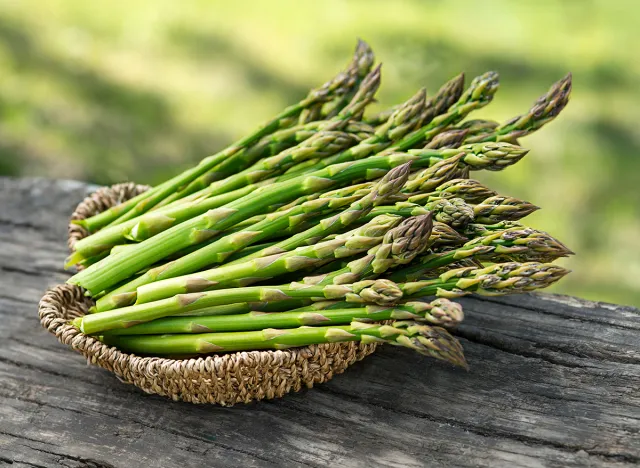
Asparagus is rich in soluble and insoluble fiber, and packs a serious punch for a low amount of calories. "If you are watching your calories, asparagus can help you maintain your weight," according to the University of Arkansas System Division of Agriculture. "With only 30 calories per one cup serving, and low in fat you can see how it can help with weight loss."
💪🔥Body Booster: You can't go wrong with green vegetables for weight loss.




